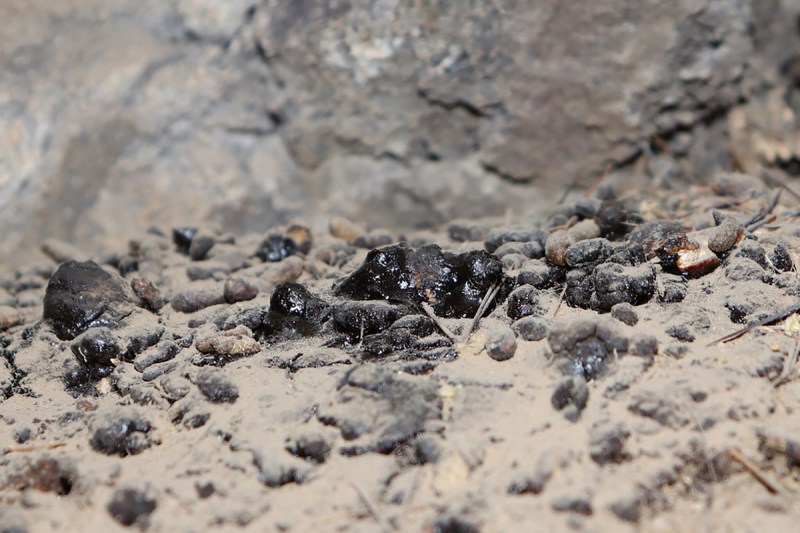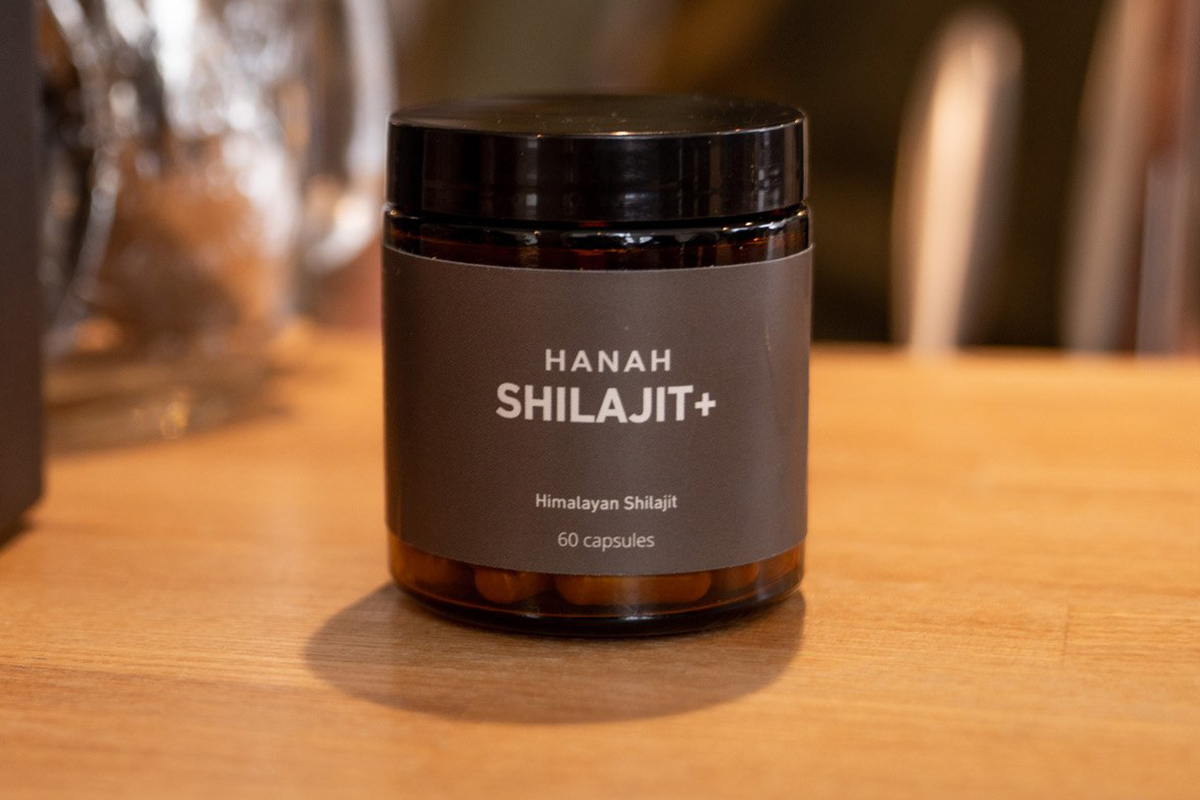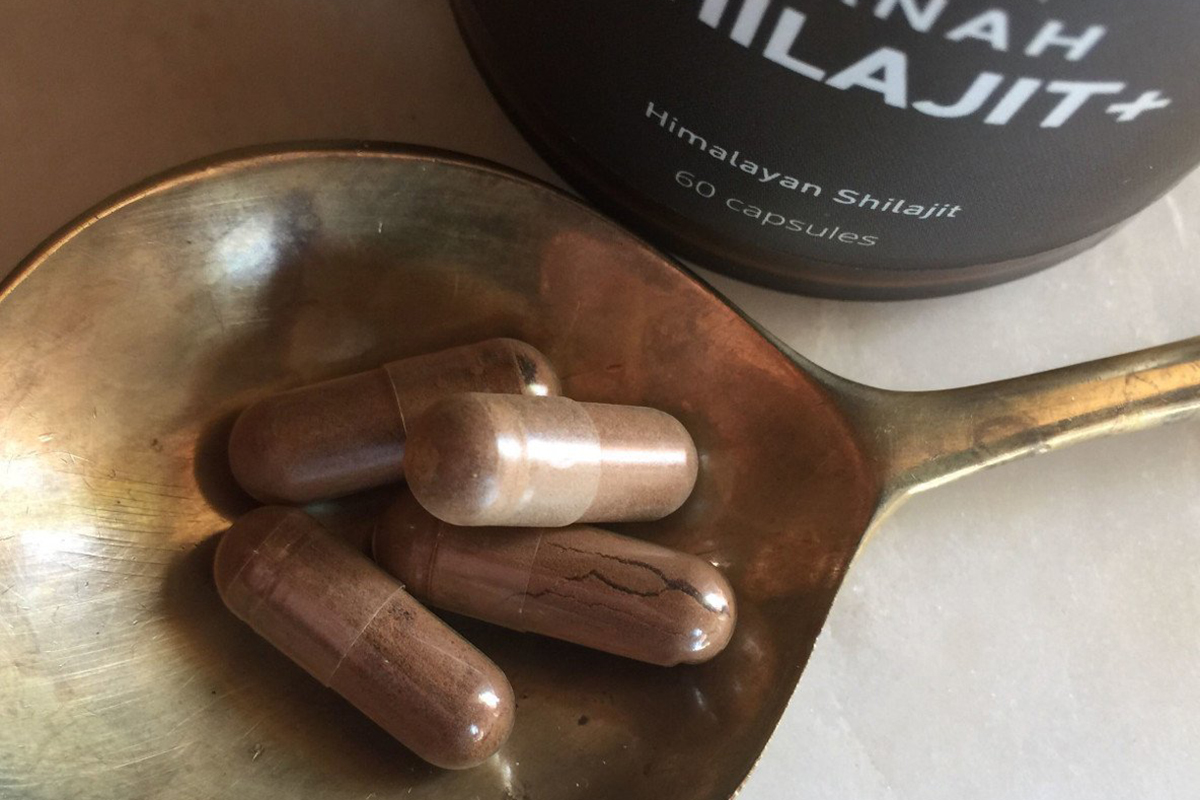
High in the Himalayas, a black tar-like goop seeps from the mountainside. It’s called shilajit (sheila-jeet), and it’s one of the most unique and nutrient-dense substances on earth.
It takes millions of years to form, when the compression of ancient organic plant matter gets stuck between layers of rock. Due to the pressure from the weight of the mountains and natural microbes that develop in this nutrient-rich compost, it turns into a dense mineral-rich material that oozes out of the rocks in warmer months.
On its own, shilajit tastes like burnt rubber, but it’s packed with minerals. Local villagers call it the “destroyer of weakness,” as the goop is full of naturally occurring fulvic acid, humic acid, phytonutrients. and more than 80 trace minerals in ionic form — the most absorbable and easily assimilated by the human body.
On its own, shilajit tastes like burnt rubber, but it’s packed with minerals.
Fulvic acid helps us boost our nutrient intake and has been shown to slow the effects of aging and help brain function. Meanwhile, phytonutrients encompass a range of plant compounds (like 4,000 different kinds) such as antioxidants. Minerals, like iron, zinc, or magnesium, may be even more important for our health as they are the keys to our vibrancy. Our bodies require much more minerals to function at high-capacity since they supply every single system, from circulation to muscles, bones, sleep, digestion, etc.
Traditionally we got minerals from the earth’s soil by eating plants and vegetables. Today, macro and micro minerals in the soil are depleted. This means that even if you’re buying organic, the soil nutrients could be duds.
We take multivitamins to round-out our vitamin needs, now you might want to take Shilajit to replenish vital minerals.
Joel Einhorn, a general wellness expert and founder of HANAH — a company sourcing ancient medical traditions and adapting them into remedies for modern life — first came across Shilajit a long time ago during his travels through Asia. He got to talking with Jimmy Chin (you know, the professional climber and mountaineer who directed Meru and Free Solo) and they both recalled seeing the black tar seeping from the mountains. In fact, local villagers in Nepal heard Chin was a rock climber and asked him to go collect the shilajit for them.
Because of shilajit’s broad spectrum of naturally occurring minerals and components, it can be taken every day to potentially improve gut health, microbiome (bacteria in our bodies we are dependent on for overall health), immunity, brain function, overall vitality, and aging, plus strength, energy, and stamina — “which is why a lot of the sherpas have been taking it for a long time,” Einhorn says.
Shilajit can be taken every day to potentially improve gut health, microbiome, immunity, brain function, overall vitality, and aging, plus strength, energy, and stamina.
Einhorn and his team at HANAH recently added a shilajit capsule to their products, blending pure Himalayan shilajit extract with ashwagandha extract and Mucuna pruriens extract. “Combined they have a synergistic effect that amplifies the effects of the other herbs,” Einhorn says, adding that these Aryuvedic healers have traditionally used these substances together.
“We suggest taking it in a preventative manner. I’m 43, healthy and active, but I’ll find I forget words or need more naps. I don’t believe this is just what happens with age, and wanted to look at what is being depleted in the body leading to these chain reactions,” Einhorn says. After living around the world, he saw people aging while retaining healthy bodies and minds because they get the right vitamins, minerals, and nutrients.
Don’t expect to feel a sudden burst of brain power and stamina after your first capsule. After a week or two of taking Shilajit, you may notice better word recall, mental clarity, and elevated mood, says Einhorn, but it’s not meant to be “fast-acting” like, say, caffeine.
Any supplement that changes your mood and performance right away probably isn’t good for you.
Take HANAH’s shilajit with healthy fats to make it more absorbable.




